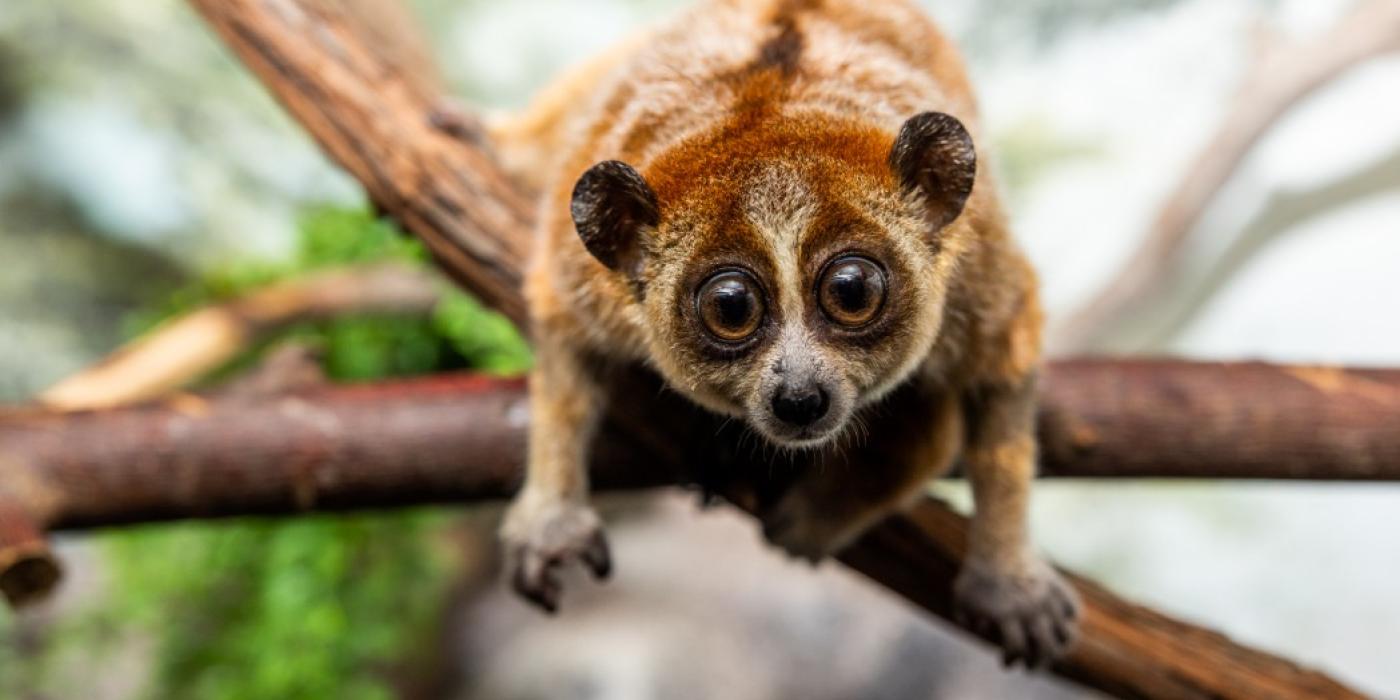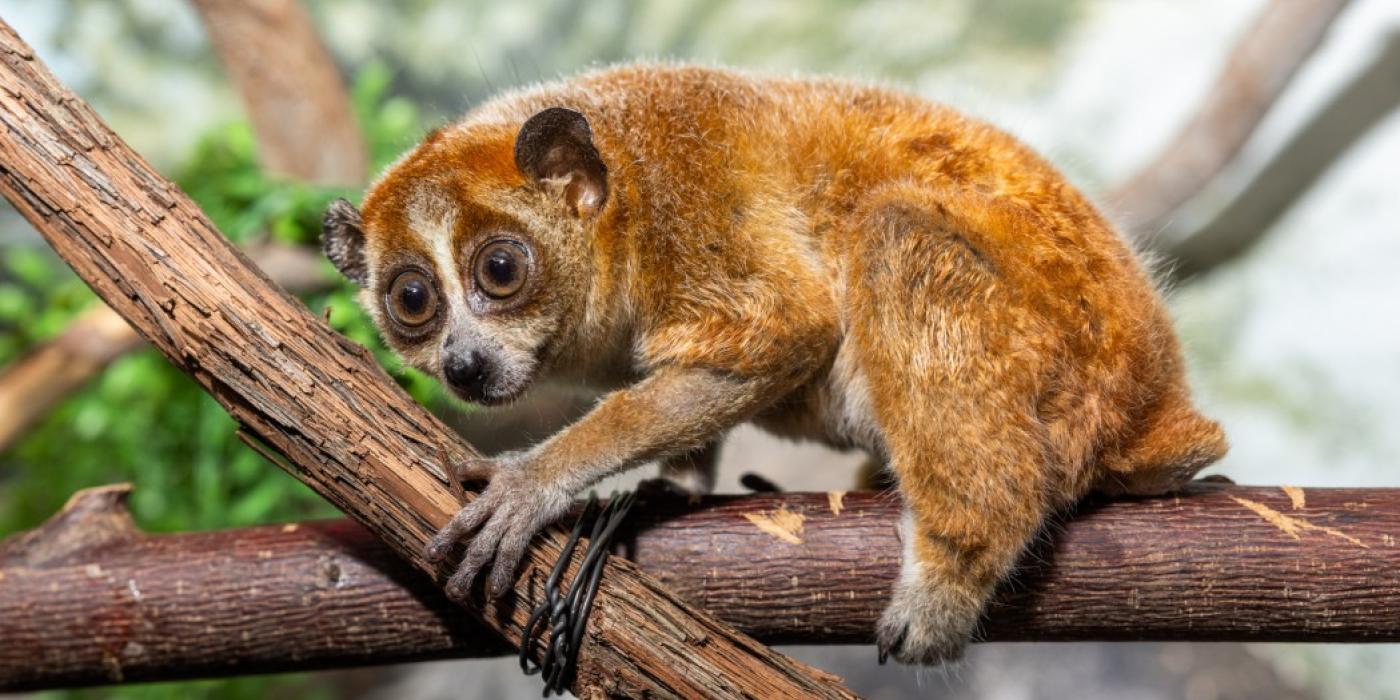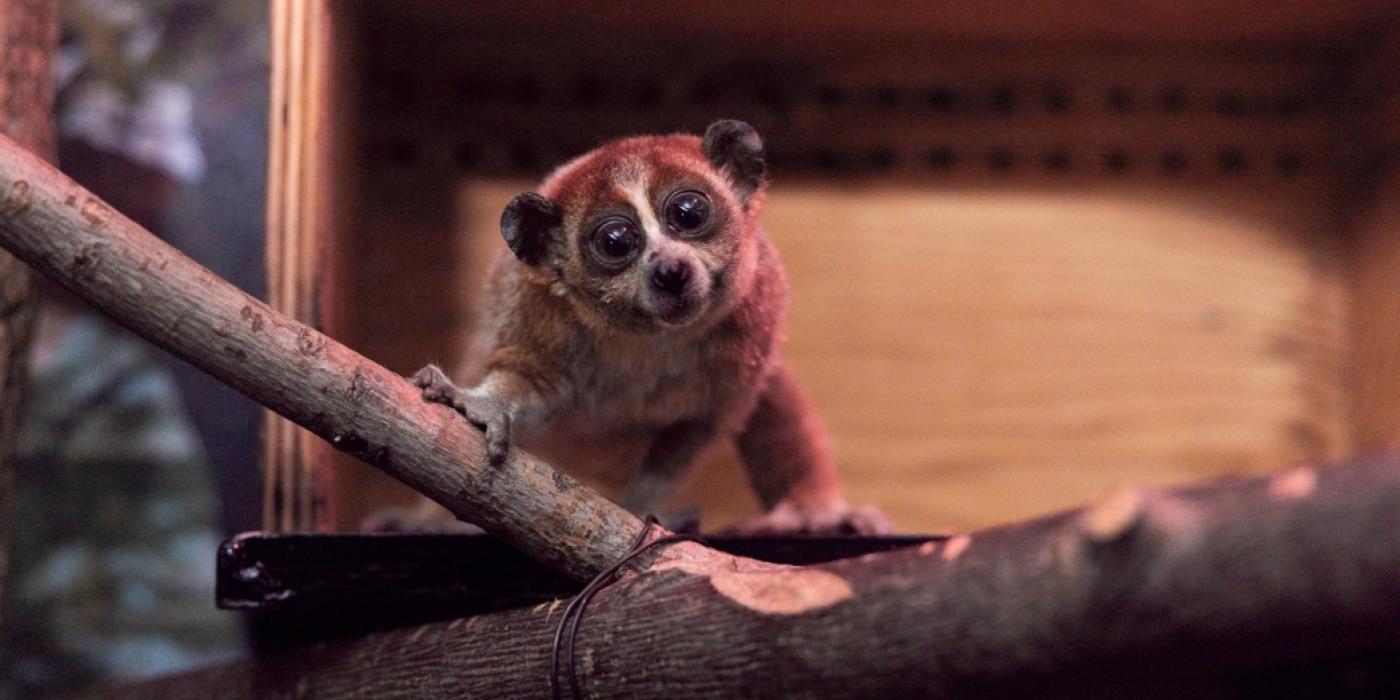Physical Description
Size
Native Habitat
Lifespan
Communication
Pygmy slow lorises communicate vocally and through their sense of smell. They make a lilting note when contacting other individuals. When they’re scared or distressed, they can growl and hiss. Members of the opposite sex whistle to each other during breeding season. Males also use their urine to mark their territories and signal to females that they would make an impressive mate. Females tend to prefer males whose smell they are familiar with rather than a strange male’s smell.
Pygmy slow lorises produce a venom in brachial glands in their upper arm that, when combined with enzymes in their saliva, causes their bites to be extra painful. It can also lead to allergic reactions and slow wound healing. Because the venom is not fast acting, they don’t rely on it to attack predators; instead, they use it in territorial disputes with each other. They also groom themselves with the venom to ward off parasites and warn predators to stay away.
Food/Eating Habits
Living most of their lives in the trees, pygmy slow lorises can hang from branches by their strong feet while they gather food with their hands. They eat mainly tree gum, saps and nectar, as well as insects. About 50-70% of their diet is tree sap! They have specialized bottom teeth that gouge the bark of trees, causing sap to flow freely. They visit these gouge sites nightly to eat the sap. They will also eat fruit, insects and small animals, relying on their excellent sense of smell to hunt their prey.
They can walk along branches hand over foot and even stand up on their back feet and then leap onto prey. They seem to be faster than that of other slow loris species.
Sleep Habits
Social Structure
Reproduction and Development
Conservation Efforts
Help this Species
- Choose your pets wisely, and do your research before bringing an animal home. Exotic animals don’t always make great pets. Many require special care and live for a long time. Tropical reptiles and small mammals are often traded internationally and may be victims of the illegal pet trade. Never release animals that have been kept as pets into the wild.
- Share the story of this animal with others. Simply raising awareness about this species can contribute to its overall protection.
Animal News

Leaf-tailed Gecko Treated for Skin Cancer With Chemotherapy





